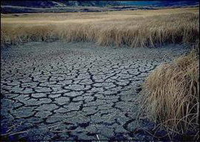Meteorology expert: Sydney dust storm result of drought
 Geneva - The red dust storm that blanketed Sydney and other parts of Australia Wednesday was in part a result of a drought plaguing the country, according to an international meteorological expert.
Geneva - The red dust storm that blanketed Sydney and other parts of Australia Wednesday was in part a result of a drought plaguing the country, according to an international meteorological expert.
The drought left surface soil loose and primed to be carried off in the massive gusts of wind that ripped through from the Outback, said Leonard Barrie, the head of research at the World Meteorological Organization, based in Geneva, Switzerland.
"This severe a storm was really aggravated by the drought that has taken place," said Barrie in an interview with the German Press Agency dpa.
The amount of particles in the air shot up from the normal 15 micrograms per cubic metre to a concentration of 15,000 micrograms per cubic metre. Health authorities say anything above a concentration of 300 can be dangerous.
Scientists were still debating whether the aridity in Australia was a result of human induced climate change or natural fluctuations in the weather.
Some indicators were pointing to climate change. But researchers have noted that in Australia and in the United States, the 1930s were loaded with dust events, most famously the Dust Bowl, which was chronicled and fictionalized by the author John Steinbeck.
Furthermore, China and other parts of Asia, along with sections of Africa are no strangers to dust storms. Even the Alps are hit in the spring and autumn with large quantities of tiny particles.
However, whatever the reason behind the Australian phenomenon, Barrie said, changes were occurring around the world and countries needed better systems to forecast the amount of expected dust and other tiny particles in the air.
"The droughts in Australia are thought to be a harbinger of things to come," the expert said. "There are certainly going to be [more] areas stricken by droughts."
Earlier this month, the WMO pushed forward an international agreement on sharing weather information.
Data collection on dust and related occurrences would likely be part of the global deal, to help interests from industrial plants affected by the particles clogging their filters to people with heart and lung diseases for whom such storms present a serious health hazard.
The technical data will be used by people all around the world, or, as Barrie put it, in the form of a question: "How much dust will get dumped on Beijing this spring?"
The necessary technology is being improved. But existing mechanisms are needed in more areas, Barrie urged, so that vulnerable sectors can be forewarned, saving costs and even lives. dpa
